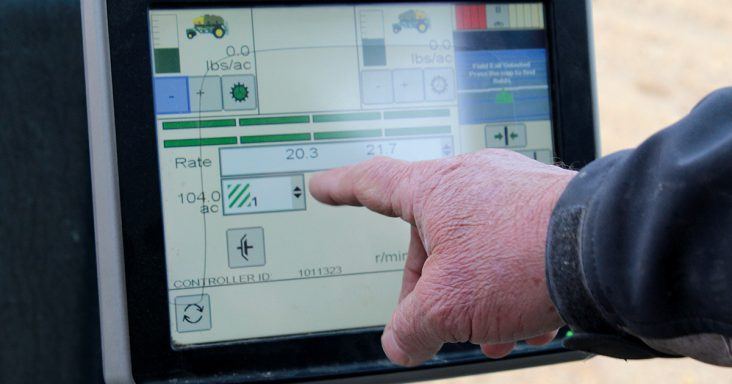Farmers still rely on guesswork, gambling, gut instincts even with technology updates
by May 8, 2019 6:16 pm 481 views

As Tony Bradley of Jonesboro plants his 2019 crop, he reflects on the changes as well as the constants he’s observed in his four decades of farming in Craighead County.
“This is my 40th crop,” Bradley said, recalling that he began farming on his own in 1979 with a used tractor and considerably fewer acres than the 3,600 on which he now raises rice, corn, soybeans and wheat east of Jonesboro.
Some of the factors are the same — farming remains a capital-intensive, high-risk endeavor with a number of variables including an inability to control neither Arkansas’ fickle weather that can make or break a crop nor the price the farmer receives for the crop that comes out of his fields.
His used 4320 John Deere tractor, Bradley said, “was a pretty advanced tractor for that time.”
A combine (the name derives from the machine’s combined functions threshing and harvesting) of that day might cost the farmer $30,000, Bradley said. “If they had an air-conditioned cab and automatic header control, that was almost all the features available.”
Today, a combine can do the harvesting work of five or six of those 1970s machines, Bradley noted, but the price has gone up more than tenfold. “It might cost $400,000 [today], but commodity prices haven’t gone up” proportionately, he said.
But climb into the cab of that $400,000 machine and one will find not only the air conditioning of the ’70s, but an array of multiple computer screens and controls.
“Technology has come a long way,” Bradley said, demonstrating as he plugged his iPad into the combine’s systems. Not only do today’s farm machines come equipped with GPS technology for efficiency and accuracy, the computers aboard his tractors or combine “give me real-time data I can pull up on the screen,” Bradley said.
For example, “If we’ve got a tractor in the field, I can pull (data) up on my laptop or phone and see what that tractor is doing. I can check and see on my phone what the planters or sprayers are doing. It will give me a printout on what we’ve applied” to the field.
Similarly, today’s combines can monitor yield “as you go,” Bradley said, as well as providing data on crop moisture. “They’ve got an app that can provide a field climate view for the combine or the tractor.”
If a machine is experiencing a malfunction, it can send a code to the dealer who in turn “may contact me and tell me before I know it,” he said.
“The newer planters,” Bradley continued, “are pretty accurate” in terms of seeding the field correctly. A bag of the variety of seed corn he uses costs more than $300, Bradley said, and will plant 2.3 acres at a rate of 34,000 seeds to the acre. “You’re paying for the technology” that the agricultural seed companies build into their seeds, he said.
Bradley enters data on planting and spraying into the Deere system and looks at it daily. At the end of the year, he is furnished a report by which he can look at the coverage maps and see if there is a problem.
“It’s the same way with combine yield,” he said. “I can look at the seeding rate versus the yield and determine ‘Was there a low spot or a thin spot or was it weedy?’ All that information helps farmers make decisions about how to approach next year’s crops or fix a particular problem.”
Though he farms east of Crowley’s Ridge where there is adequate underground water to irrigate crops, Bradley has precision-leveled his farmland and uses polyethylene tubing or “poly pipe” for irrigation.
“I don’t use as much water and I can get it” on or off “in a much more timely fashion.”
In addition, flow meters that he can monitor tell him how much water each well is putting out. There is also a phone app that can determine the proper size of the pipe and of the holes that are punched in the pipe to water a field properly.
With a deluge of data from multiple sources, Bradley said, “sometimes you can get overwhelmed trying to figure it all out.” But from the guesswork of the 1970s to the guesswork of today, that’s a problem he’s willing to accept.
